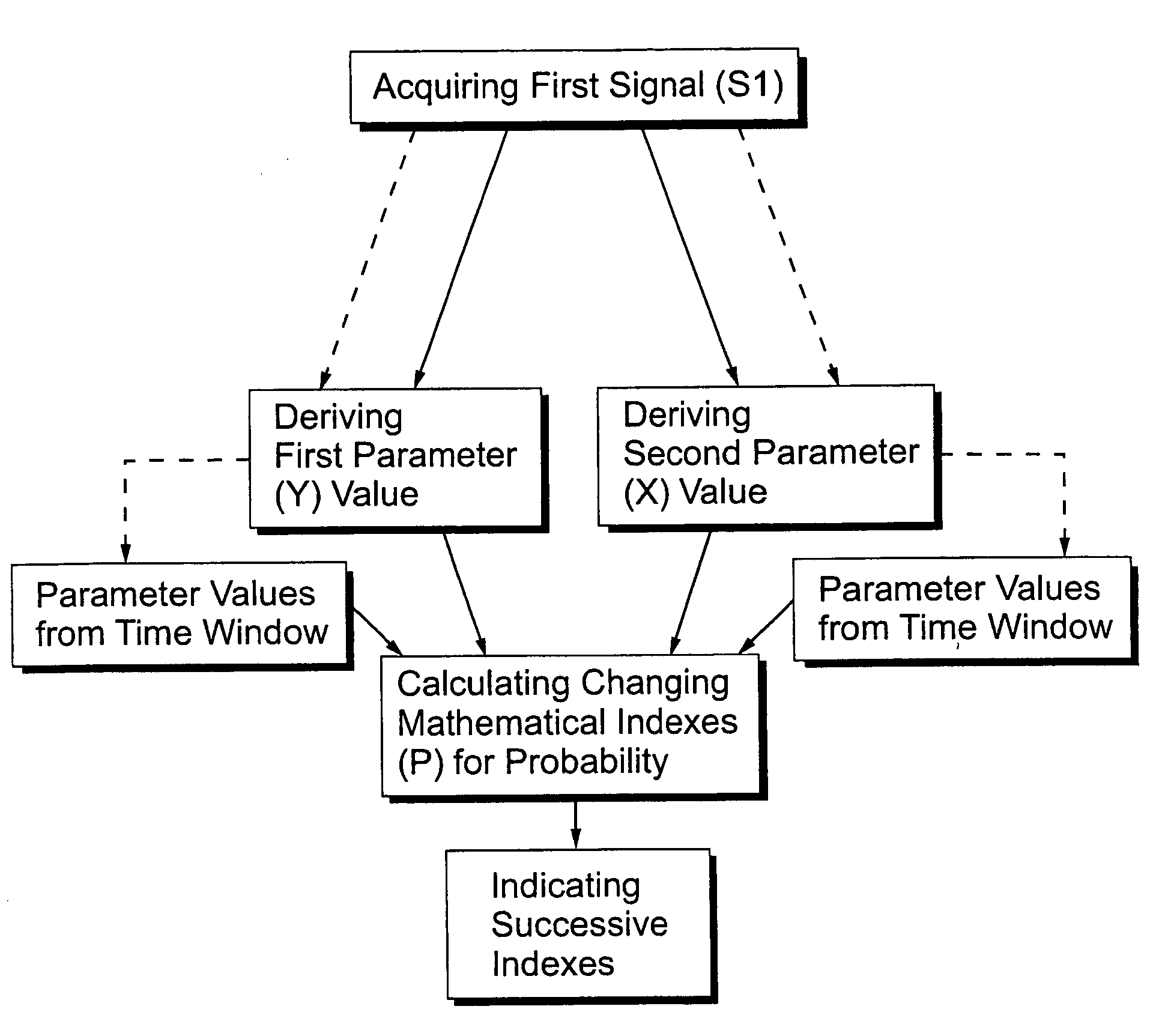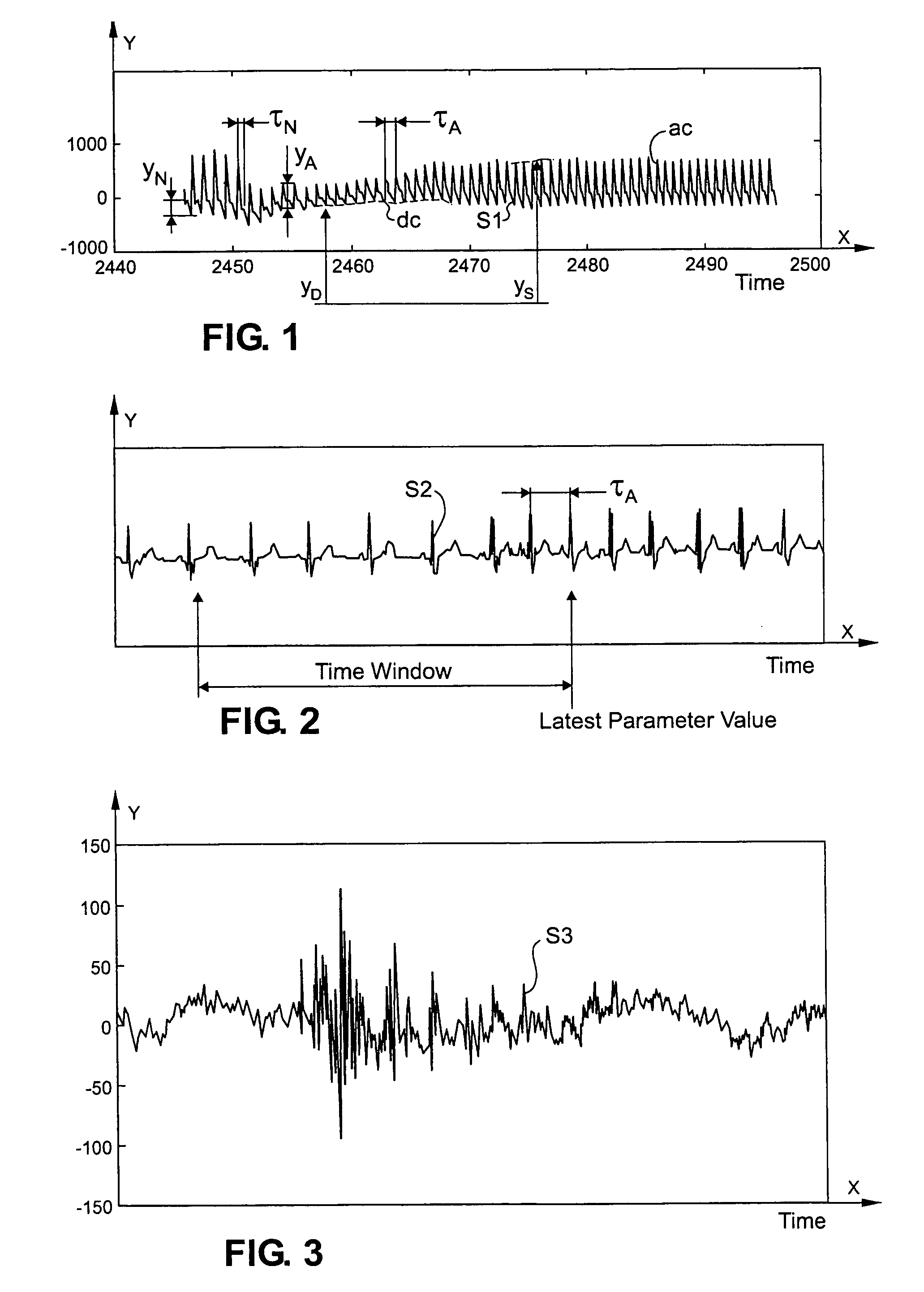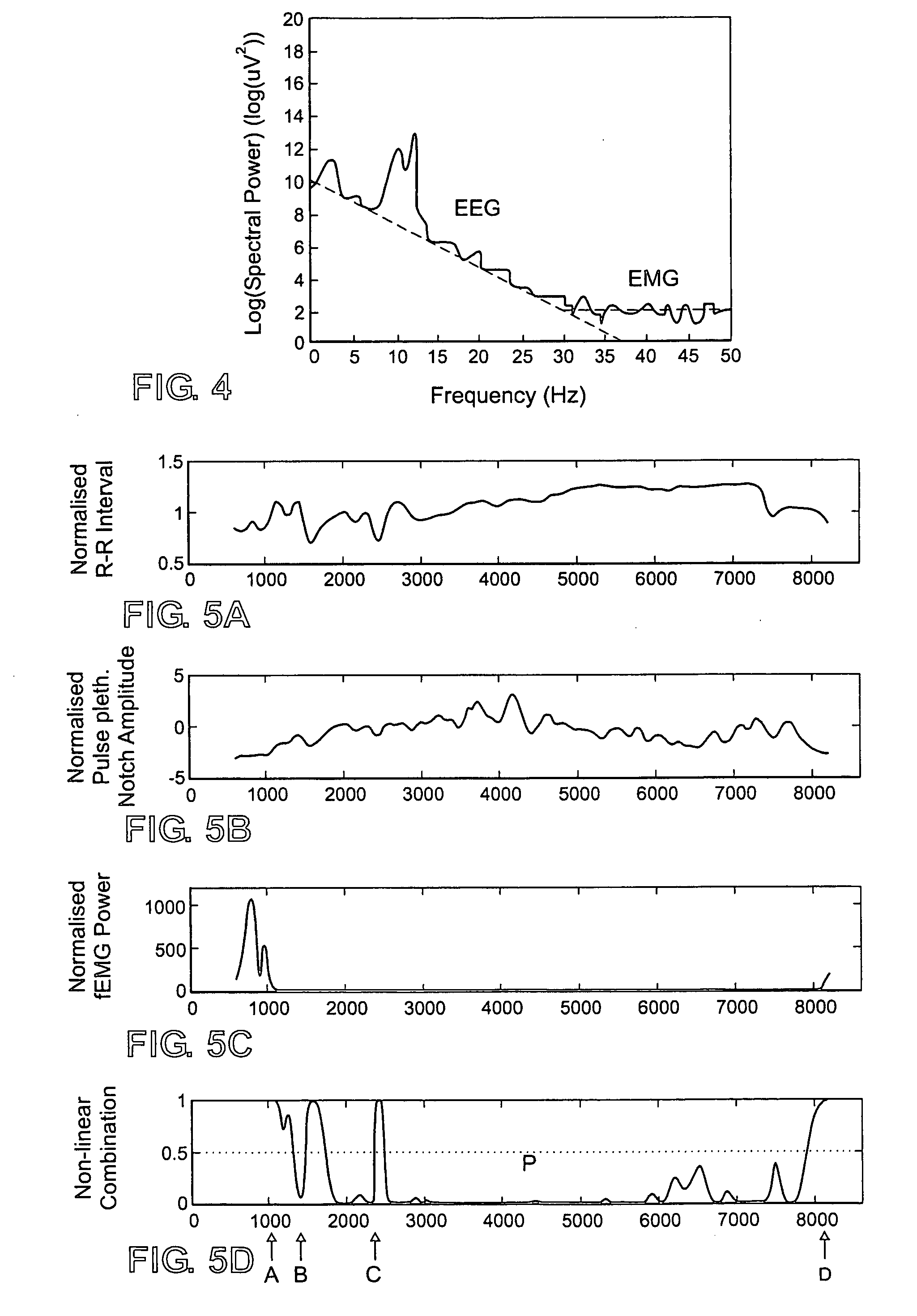Method and apparatus based on combination of physiological parameters for assessment of analgesia during anesthesia or sedation
- Summary
- Abstract
- Description
- Claims
- Application Information
AI Technical Summary
Benefits of technology
Problems solved by technology
Method used
Image
Examples
first embodiment
In the invention the combination of the parameter values used in the probability function P for the patient comfort in anesthesia are obtained only from one cardiovascular signal SI. Though the outmost simplicity of this method in practice, multiple of quantities can be derived in the way that they still carry different type of information from the function of the autonomic nervous system (=ANS). The heart rate and its variability, which mainly reflects the parasympathetic activity, can be extracted from the periodicity of the measured pulse wave, i.e. from the beat-to-beat pulse rate. On the other hand the amplitude of the pulse wave, especially when measured in peripheral tissue, carries information from the skin circulation, which is mainly controlled by the sympathetically branch of ANS. In case when the parasympathetical activity of the patient is stronger than the sympathetical activity, the heart rate is low, blood pressure is normal and peripheral circulation works normally ...
example
In the following an example is described, which is based on an unpublished material concerning 23 patients, single-variable based estimators based on a PPG-signal, and a fEMG-signal for the level of analgesia could classify the patients' responses to skin incision with 65-74% correctness i.e. the physiological responses could discriminate the patients who moved or did not move as a response to skin incision. When the information in these variables is combined the correctness for detection of insufficient analgesia is improved to 83%. In the example of real-time data were recorded during abdominal hysterectomy surgery. After induction (FIG. 5D: Arrow A) with fentanyl 1 μg / kg iv and propofol 1 mg / kg iv anesthesia was deepened with sevoflurane 8% in 100% oxygen via facial mask until endotracheal intubation (FIG. SD: Arrow B). Sevoflurane concentration was adjusted to equal 0.8 MAC (1.6% end-tidal). Surgery began 14 min after intubation with skin incision (FIG. 5D: Arrow C), after whic...
PUM
 Login to View More
Login to View More Abstract
Description
Claims
Application Information
 Login to View More
Login to View More - Generate Ideas
- Intellectual Property
- Life Sciences
- Materials
- Tech Scout
- Unparalleled Data Quality
- Higher Quality Content
- 60% Fewer Hallucinations
Browse by: Latest US Patents, China's latest patents, Technical Efficacy Thesaurus, Application Domain, Technology Topic, Popular Technical Reports.
© 2025 PatSnap. All rights reserved.Legal|Privacy policy|Modern Slavery Act Transparency Statement|Sitemap|About US| Contact US: help@patsnap.com



